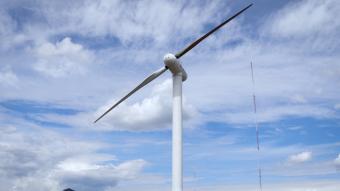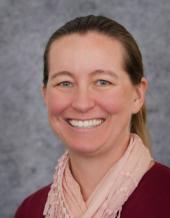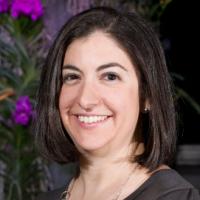The Next Big Thing in Energy: Two Mines faculty members working on Energy Earthshots

The U.S. Department of Energy has set some ambitious goals: reduce carbon emissions by 50 to 52 percent by the end of the decade, secure a 100 percent clean electrical grid by 2035 and reach a net-zero carbon economy by 2050.
To help meet these goals, DOE created the Energy Earthshots program – a play on the term moonshot – targeting Hydrogen, Long Duration Storage, Carbon Negative, Enhanced Geothermal, Floating Offshore Wind, Industrial Heat and Clean Fuels & Products. Two Mines professors were recently funded on projects that are part of the effort.
Katie Johnson, professor of electrical engineering, is part of the team working on a Floating Offshore Wind Energy Earthshot Research Center. Alexis Navarre-Sitchler, professor of geology and geological engineering, is working with the Center for Understanding Subsurface Sensing and Permeability, an Enhanced Geothermal Energy Earthshot Research Center.
The goal of the Energy Earthshot Research Centers is to blaze a trail through “the frontiers of the clean energy transition,” according to the DOE. They’re meant to be an all-hands-on-deck call for innovation, collaboration and acceleration of the clean energy economy, breaking down barriers in order to deploy emerging technology at scale.
“This truly is a moonshot project for DOE,” Sitchler said. “Mines is now involved in one of the largest scale efforts out of the Department of Energy to push the science forward in renewable energy.”
Creating more offshore wind farms in the U.S.

Johnson is working with colleagues at Pacific Northwest National Laboratory to expand the capacity for offshore wind farms in the United States. Currently, only two offshore wind farms are operating in the U.S.: one near Block Island, Rhode Island, and another off the coast of Virginia.
The research team is focused on four themes: metocean (understanding the atmosphere and the environment), turbine and farm (for which Johnson is co-leading with the PNNL-based lead), grid (how to transmit and distribute the electricity generated) and SciML (scientific machine learning) Digital Energy, a cross-cutting team compiling the science and engineering work from the other teams to better understand how the different themes intersect.
“Looking at the entire multiscale big picture, from the power grid to how it affects the climate, and how all of the aspects interact with each other, is a novel way of tackling the issue through this Earthshot,” Johnson said.
Johnson connected with colleagues at PNNL after working on an Advanced Research Projects Agency—Energy (ARPA-E) project on wind control. With her experience with wind turbine and wind farm control systems, she was invited to serve as a co-lead for that theme of the project.
Johnson’s overall research focuses on two areas: wind energy control systems and engineering education. She’s hoping to expand on that background and learn more about the other aspects of wind energy science and technology from the different experts on the interdisciplinary project.
“I’m really excited to learn more, especially about the atmospheric science and the ocean science that go beyond my prior formal collaborations,” she said. “The big problems that we face on Earth are extremely multidisciplinary and we need transdisciplinary solutions, so I think this kind of project is one step towards breaking down silos in ways that are needed.”

Renewable energy from underground
Sitchler’s Earthshot project, also in partnership with Pacific Northwest National Laboratory, is looking to the Earth’s subsurface for answers.
Specifically, her focus is the interaction of fluids and minerals in an enhanced geothermal system (EGS) environment, which is a human-made reservoir created when underground sources are hot but don’t have enough natural permeability for fluids to bring the energy to the surface. For successful implementation of EGS a better understanding of how fluid flows in the subsurface is needed as well as developing the capability to use geophysics to monitor fluid flow during subsurface operations.
“Any time we inject fluids into the subsurface, we pull that system out of chemical equilibrium,” Sitchler said. “Chemical reactions will work to establish a new equilibrium and that can significantly change the characteristics of the subsurface, change the pathways that the fluids take, the chemistry of the fluids, which then changes how effective the overall system is. So, it really just boils down to generating the kinds of models and the kinds of data that we need to be able to predict how this coupled subsurface system evolves through time.”
Sitchler, and the CUSSP team, will be conducting their work at a service site at the Sanford Underground Research Facility in Lead, South Dakota, which is located at the site of a former gold mine. She was into the leadership of the Earthshot team based on her research in reactive transport in fractured rock, conducted in partnership with Los Alamos National Laboratory.
The goal of the Enhanced Geothermal Earthshot Research Center is to dramatically reduce the cost of EGS by 90 percent.
“We want to be able to better understand the chemistry and what’s going to happen in the subsurface when we inject this water,” Sitchler said. “Is that going to be beneficial or detrimental to the project design if we don’t do anything? Or can we do something to make it beneficial and prevent detriment?”




